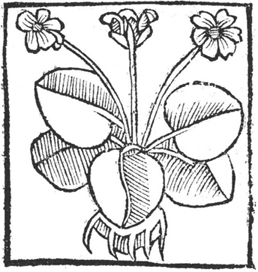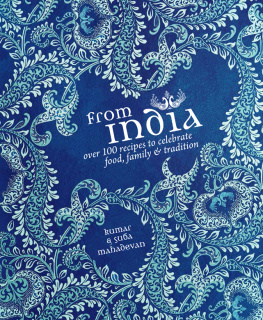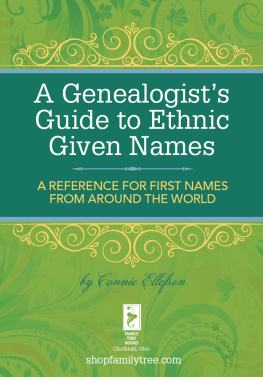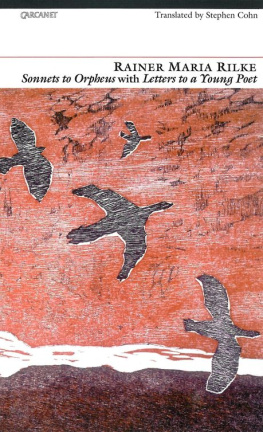THE FLOWERING YEAR
GARDENING COMPANION
THE BORDER BOOK
THE NEW KITCHEN GARDEN
THE TULIP
PLANT PARTNERS
THE NAMING OF NAMES
THE SEARCH FOR ORDER IN
THE WORLD OF PLANTS

ANNA PAVORD
BLOOMSBURY
Title page: A waterlily, here called by its ancient name,
Nenufare. This woodcut appeared in The grete herball
of 1529, the English translation of a book that had
been published in France in 1486
Royal Horticultural Society, Lindley Library
Endpapers: Seed tables from Robert Morisons Plantarum
umbelliferarum distribution nova (Oxford, 1672)
The Natural History Museum, London
Copyright 2005 by Anna Pavord
All rights reserved. No part of this book may be used or reproduced in any manner whatsoever without written permission from the publisher except in the case of brief quotations embodied in critical articles or reviews. For information address Bloomsbury Publishing, 175 Fifth Avenue, New York, NY 10010.
For legal purposes, the acknowledgements and list of illustrations constitute a continuation of this copyright page.
Library of Congress Cataloging-in-Publication Data has been applied for.
eISBN: 978-1-59691-965-5
First U.S. Edition 2005
1 3 5 7 9 10 8 6 4 2
Typeset by Palimpsest Book Production Limited, Polmont, Stirlingshire in Berling and Serlio
Printed and bound in Italy by Graphicom
All papers used by Bloomsbury Publishing are natural, recyclable products made from wood grown in well-managed forests. The manufacturing processes conform to the environmental regulations of the country of origin.
CONTENTS
To Colin Hamilton and Kulgin Duval,
who were there at the beginning.
HIDDEN DEEP IN the viscous gloom of Guyanas tropical rainforest are two monster waterfalls: Kaiteur on the Potaro river and Orinduik on the Ireng. No maps show the faint, foot-narrow trails that connect them. They are known only to the Patamona Indians who live here, and a few miners - Portuguese in origin - who set up solitary camps deep in the bush to pan for gold and dig for diamonds. Kaiteur, almost five times higher than Niagara, Id first seen from the copilots seat of a twin-engined Islander plane, flying with a prospector up to his camp on the Venezuelan border. Wed been following the Potaro river, which from the air cuts a series of wide, lazy, muddy loops through the dense canopy of trees. The green stretches from horizon to wild horizon, broken only occasionally by shocking red, where a vast tree explodes into bloom. On a whim, the pilot had brought the plane down low over the great arc of the Kaiteur fall, and landed it on a makeshift strip that he sometimes used, cleared from the bush. Beating our way through scrub, the noise of the fall dumbing any possibility of thought, wed emerged by the wide, flat river at the very point where it throws itself off the edge of the world to land 820 feet below, in a narrow, rocky chasm of aweful savagery. Rainbows made and remade themselves in the spray that hung in the valley beneath the lip of the fall. Swifts darted behind the pounding curtains of water to the nests they had built on the rock face behind. Bromeliads and orchids shivered in the turbulence created when the torpid bulk of the river suddenly broke on the rim of the escarpment. Free of its bulk, it became air and prisms. Liberated, it flew. Here I learned of Guyanas second great waterfall, Orinduik, and of the trail that was said to connect it with Kaiteur. The pilot did not know of anybody who had walked it, but a week, he thought, would do it, if we could find Amerindian guides to take us.
So that is why, six months later, I am stumbling, disorientated, through the filtered gloom under the canopy of this same rainforest. In front of me, a snake in a perfect camouflage jacket stretches out over the trail, motionless, disregarding. Without the warning from our Patamona guides, I would not have seen it. What sort of snake is it? I dont know, but they are indicating I need to treat it with the careful respect that they have shown. I know nothing here. I depend on the guides entirely. There are no roads, no signposts, no indicators. I dont know where we are, which way we are facing, how far we have travelled, how much further we will be going before our two companions decide to set up camp for the night. To How far? or How long? questions, they give the same elegant, liquid wave of the arm. That way. In time. So we continue to slither, and climb, and slip, and creep, and wade, and swim, and trip, and fall, and curse, and swing, and jump our way through this outlandish territory. Though so evidently familiar to our Amerindian guides, it is a world as strange as Mars to me.
Our route seems to be following the Potaro river upstream, perhaps to a point where it meets the Kopinang. The river is usually hidden by impenetrable curtains of growth, but I can sometimes hear it, crashing over rapids or surging through a narrow chasm of rock. If it was navigable, wed be navigating it, in the narrow dugout canoes that the Patamonas excel in making. Water is easier to travel over than land. When there is no river noise, the forest is oddly quiet; few birds, the two guides moving in absolute silence through this world of theirs. Only once do they shout, when a group of jaguars cross the track in front of us with the self-contained, intent look of hunters on a mission. Early one morning, though, a strange sound passes through the forest, high, as though caught in the web of the treetops. The noise swells and falls away, swells and falls away, like some great animal gasping for breath. It is pitched low and in a minor key, and it wraps all around us, ghostly and insubstantial, ebbing and flowing. But what can be making such an unearthly sound? Howler monkeys? Baboons? I cant see them moving through the canopy. If I could, at least one question would be answered and I would feel less adrift in this world that I cant interpret or understand.
Occasionally we meet a hunter in the forest with bow and quiver of poison-tipped arrows. Sometimes an entire family passes by: babies, cooking pots, hunting dogs, bags of farine. I watch a child, three years old at most, running barefoot over a river on a fallen tree, the only bridges that exist here. It is set high over a boiling torrent of water, impossible to swim across, and the damp, mossy log has no rope sides to it, no handholds. It is like a tightrope. These log crossings terrify me more than anything ever has in the whole of my life. We do perhaps a dozen a day. I have nightmares about them; I wake up kicking and screaming. I do not have the physical skills I need to survive here, but Im disorientated in a mental sense too. Born and brought up in a temperate country, Im lost here in the tropics where no living thing in this complex, interwoven understorey has a name that I know.

Plate 1: A man cutting the cure-all betony (our Stachys officinalis], shown wildly out of scale in a manuscript made in the early thirteenth century
I reach out to pick a leaf, which is about the size of a hazel leaf, though more leathery and tough. I think it is the one that soothes the bite of a cabouri fly. But is it though? Or is it the leaf that I was warned never to touch, even fleetingly, for fear that my heart would stop, right there on the track, because of the poison it contains? What are the distinguishing, the essential, differences between the two plants? Someone, somewhere has worked these out, set them down, commissioned drawings, published descriptions, assigned each plant a place in a particular family, christened them with a two-part name that shows its botanical genus and its species. The taxonomist, the namer of names, will have described the plants characteristics, explained its kinship with other plants in the same family, shown how, through some minute distinction, perhaps veining on the leaf, hairs on the stem, habit of growth, it is not the useful, medicinal leaf I thought it might have been, but the powerful drug. This work has transmuted local knowledge of plants, critical to the survival of indigenous people anywhere, into a comprehensive system of naming, of ordering and classifying, which now embraces every known plant in the world. But I am here without access to this knowledge, able only to define plants as they were defined in the Middle Ages in Europe - by their usefulness, their potential for food, medicine or magic. If I lived here, I too would learn to pick out the particular saplings that the Amerindians use to make their overnight shelters. I would also recognise the tree that produces the invaluable gum which our companions use as firelighters. In the pouring rain, as darkness falls, with a pile of wet sticks for a cooking fire, a small ball of this gum provides an infallible flame. Salvation. But nobody else, not even the Macushi or the Wai Wai, Amerindian neighbours, would recognise the name that the Patamona people use to describe it.




















